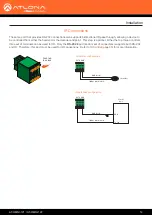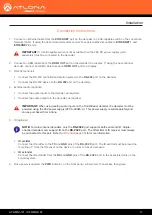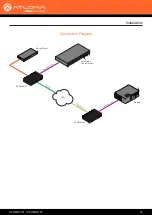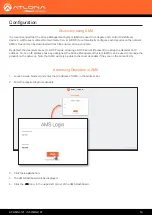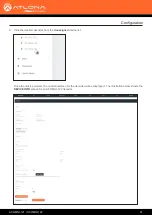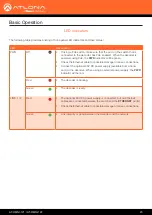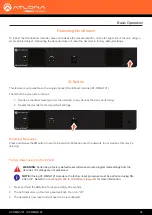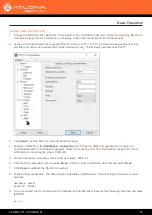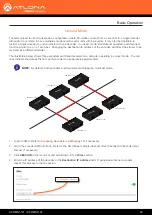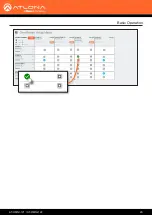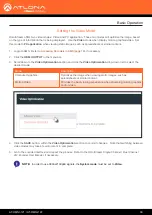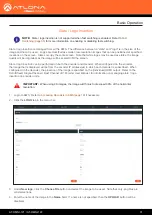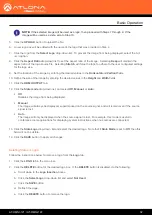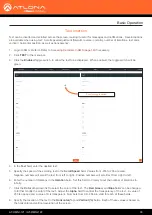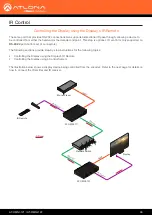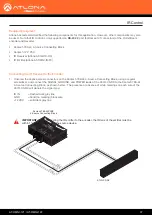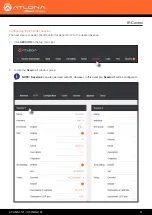
AT-OMNI-121 / AT-OMNI-122
26
Unicast Mode
The term
unicast
is used to describe a configuration where information is sent from an encoder to a single decoder.
Although it is common to have multiple encoder and decoder units within a system, it may also be desirable to
restrict a single encoder to communicate with one decoder. In
unicast
mode, OmniStream encoders and decoders
function similar to an n x 1 switcher. Changing the destination IP address at the encoder, will direct the stream to be
received by a different decoder.
The illustration below shows three encoders and three decoders on a network, operating in
unicast
mode. The red
lines indicate the data paths from each encoder to a separate (single) decoder.
HD
MI
PW
R
LINK
TM
OM
NIS
TREA
M
VOLUME
DISPLA
Y
INPUT
ID
1
2
1
2
HD
MI
PW
R
LINK
TM
OM
NIS
TREA
M
VOLUME
DISPLA
Y
INP
UT
ID
1
2
1
2
HD
MI
PW
R
LINK
TM
OM
NIS
TREA
M
VOLUME
DISPLA
Y
INP
UT
ID
1
2
1
2
LAN
192.168.11.116
192.168.11.114
192.168.11.115
192.168.11.117
192.168.11.118
192.168.11.121
1
2
ID
PW
R
LINK
TM
OMNI
STREAM
1
2
ID
PW
R
LINK
TM
OMNI
STREAM
1
2
ID
PW
R
LINK
TM
OMNI
STR
EAM
Encoder
Encoder
Encoder
Decoder
Decoder
Decoder
NOTE:
By default, both encoders and decoders are shipped in multicast mode.
1.
Login to AMS. Refer to
Accessing Decoders in AMS (page 19)
2.
Go to the encoder AMS interface. Refer to the
OmniStream Single-Channel / Dual Channel A/V Encoder User
Manual
, if necessary.
3.
Click
SESSION
in the menu bar and scroll down to the
Video
section.
4.
Enter the IP address of the decoder in the
Destination IP Address
field. If using dual-channel encoders,
repeat this process for each session.
IP address of decoder
Basic Operation



